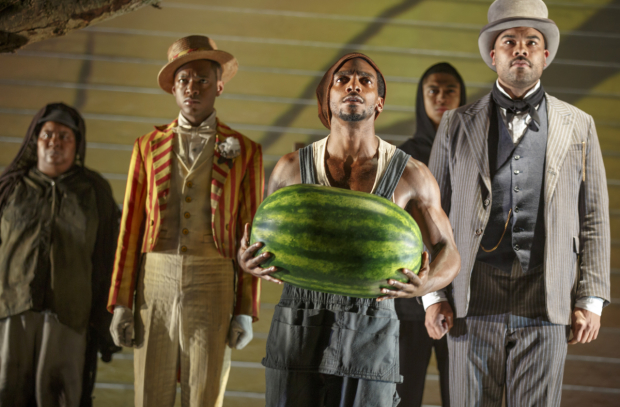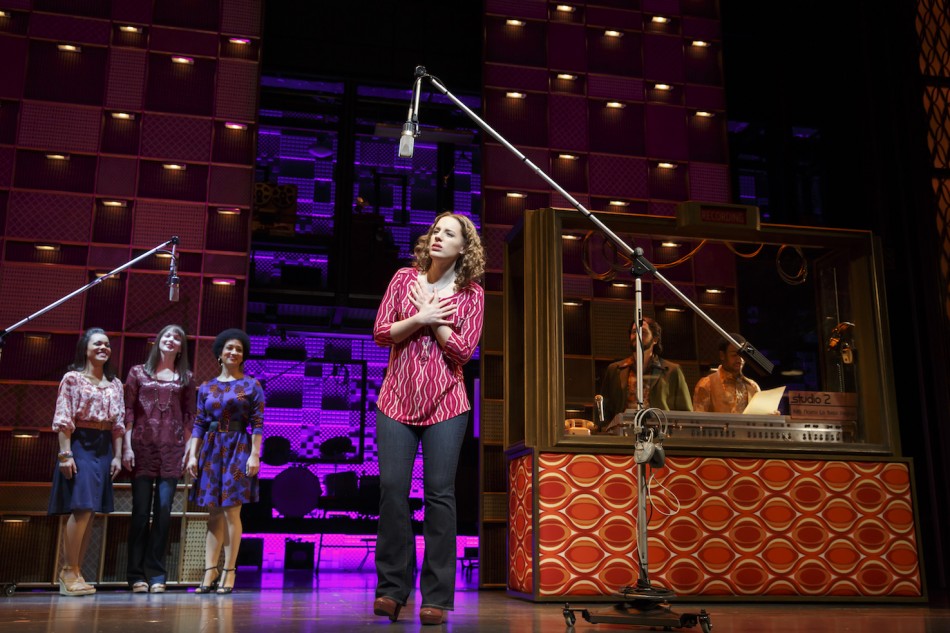by Carol Rocamora
It’s got the longest – and most formidable – title of any of her dramatic works: The Death of the Last Black Man in the Whole Entire World AKA The Negro Book of the Dead. But whether you lean forward to decipher its meaning, or sit back and let its poetry and imagery wash over you – either way, it’s a dramatic trip like none you’ve ever taken.
Playwright Suzan-Lori Parks has done it again – surprising us with a daring new work unlike any that she’s written before. This time, it’s in the form of a mesmerizing dramatic poem that deals with her favorite theme – namely, the history of the black man in America, and beyond. It’s told in a mélange of styles including Greek chorus, Noh theatre, and slam poetry, featuring Brechtian scene titles, hip hop music and dancing. Don’t expect a linear narrative – the chronology of black history has been intentionally scrambled, as the play segues back and forth between 1317 (and earlier, back to ancient Egypt) and today (and beyond – space travel is mentioned). It’s a playwright’s imagination gone wild, inspired by unstructured jazz music, set free from the constraints of conventional theater.
Being literal-minded, I nonetheless found myself eager to put the story together – so here’s what I deciphered. A young man (in farmer’s overalls, seated on the empty stage as we file in) has died, and his wife (who takes her seat in the rocker next to him) is trying to figure out where his final resting place will be. “Where’s he gonna go now that he done dieded?” the wife (Roslyn Ruff asks, a question that echoes throughout these spellbinding seventy minutes, along with other leitmotifs.
But the husband (Daniel J. Watts) is constrained by a huge watermelon he’s holding in his lap. “The man moves his hands,” he recites – but he’s hampered by the weight of it, along with the racial stereotype that the watermelon imposes on his identity. In fact, as the program indicates, “Black Man With Watermelon” is his name, while his nurturing wife’s name is “Black Woman With Fried Drumstick.” Indeed, all of the iconic characters in the chorus embody stereotypes, with names such as “Yes and Green Black-Eyed Peas Cornbread,” Old Man River Jordan,” “Lots of Grease and Lots of Pork,” “Before Columbus,” “Queen-Then-Pharaoh Hatshepsut”’, etc.
As Brechtian scene titles flash on the upstage wall of Riccardo Hernandez’s spare set, the chorus of nine characters recount episodes in the life of this black man who “fell twenty three floors to his death from a spaceship in 1317.” We see a young man in a hoodie put to death in an electric chair, and then later lynched. To our horror, he hangs from a rope suspended from the theatre’s ceiling, while the stark image of a tree trunk stretched across the entire stage reminds us of this shameful chapter of American history. “I can’t breathe”, says Black Man With Watermelon, again and again. “Will somebody please take this rope off my neck?!” Meanwhile, the character of the Queen represents his black ancestry, going back to ancient African Egypt and earlier – reminding us of the dignity of which he has been deprived ever since.
Lileana Blain-Cruz directs an inspired ensemble with appropriate flamboyance and flair. Montano Blanco’s costumes are specific and vivid, and Raja Feather Kelly’s original choreography (an exotic bland of primitive and hip hop) is electrifying.
As the work crescendos to a dramatic climax, the chorus gathers onstage behind the husband and wife, each holding a watermelon. “You should write it down or they will come along and tell you that we didn’t exist,” says one character, who has been repeating that line throughout the work in various incarnations. Clearly, Suzan-Lori Parks has heeded her own character’s command. Expect more surprises during her year-long residency at the marvelous Pershing Square Signature Center.
The Death of the Last Black Man in the Whole Entire World AKA The Negro Book of the Dead. Through December 18 at the Signature Theatre (The Pershing Square Theatre Center, 480 West 42nd Street between Ninth and Tenth Avenues). www.signaturetheatre.org
Photo: Joan Marcus























